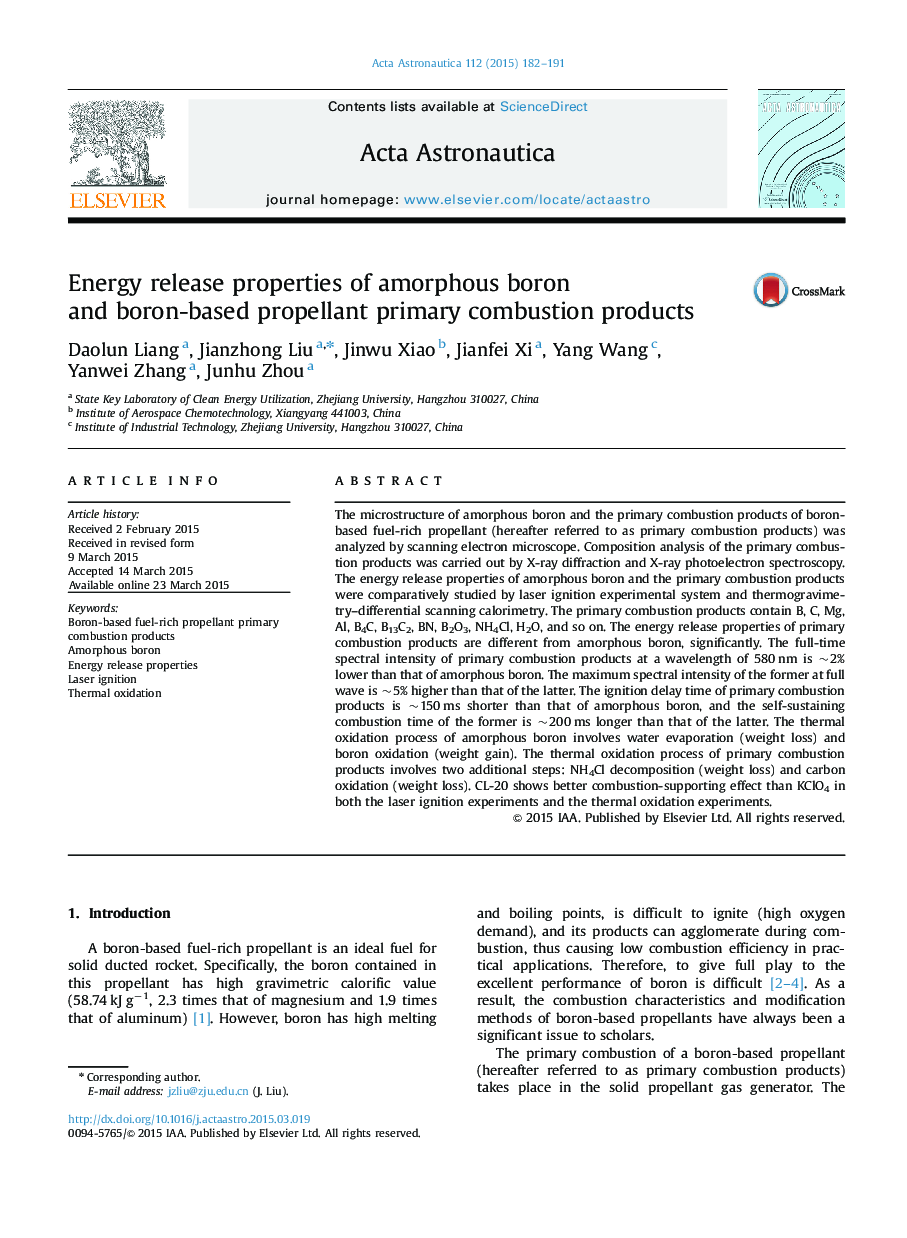| کد مقاله | کد نشریه | سال انتشار | مقاله انگلیسی | نسخه تمام متن |
|---|---|---|---|---|
| 8056623 | 1519942 | 2015 | 10 صفحه PDF | دانلود رایگان |
عنوان انگلیسی مقاله ISI
Energy release properties of amorphous boron and boron-based propellant primary combustion products
ترجمه فارسی عنوان
خواص انرژی انتشار محصولات احتراق اولیه سوخت بور و بور بر اساس
دانلود مقاله + سفارش ترجمه
دانلود مقاله ISI انگلیسی
رایگان برای ایرانیان
کلمات کلیدی
محصولات احتراق اولیه پروپانگان سوخت بر اساس سوخت بور، بورون آمورف، خواص انرژی آزاد، احتراق لیزر، اکسیداسیون حرارتی،
موضوعات مرتبط
مهندسی و علوم پایه
سایر رشته های مهندسی
مهندسی هوافضا
چکیده انگلیسی
The microstructure of amorphous boron and the primary combustion products of boron-based fuel-rich propellant (hereafter referred to as primary combustion products) was analyzed by scanning electron microscope. Composition analysis of the primary combustion products was carried out by X-ray diffraction and X-ray photoelectron spectroscopy. The energy release properties of amorphous boron and the primary combustion products were comparatively studied by laser ignition experimental system and thermogravimetry-differential scanning calorimetry. The primary combustion products contain B, C, Mg, Al, B4C, B13C2, BN, B2O3, NH4Cl, H2O, and so on. The energy release properties of primary combustion products are different from amorphous boron, significantly. The full-time spectral intensity of primary combustion products at a wavelength of 580Â nm is ~2% lower than that of amorphous boron. The maximum spectral intensity of the former at full wave is ~5% higher than that of the latter. The ignition delay time of primary combustion products is ~150Â ms shorter than that of amorphous boron, and the self-sustaining combustion time of the former is ~200Â ms longer than that of the latter. The thermal oxidation process of amorphous boron involves water evaporation (weight loss) and boron oxidation (weight gain). The thermal oxidation process of primary combustion products involves two additional steps: NH4Cl decomposition (weight loss) and carbon oxidation (weight loss). CL-20 shows better combustion-supporting effect than KClO4 in both the laser ignition experiments and the thermal oxidation experiments.
ناشر
Database: Elsevier - ScienceDirect (ساینس دایرکت)
Journal: Acta Astronautica - Volume 112, JulyâAugust 2015, Pages 182-191
Journal: Acta Astronautica - Volume 112, JulyâAugust 2015, Pages 182-191
نویسندگان
Daolun Liang, Jianzhong Liu, Jinwu Xiao, Jianfei Xi, Yang Wang, Yanwei Zhang, Junhu Zhou,
